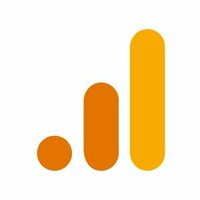Need advice about which tool to choose?Ask the StackShare community!
AppDynamics vs Google Analytics: What are the differences?
Key Differences between AppDynamics and Google Analytics
AppDynamics and Google Analytics are both popular tools used for monitoring and analyzing website performance. Here are six key differences between the two:
Data Collection: AppDynamics collects data directly from the application's code using agents, providing detailed insights into the performance of individual transactions and code-level diagnostics. Google Analytics, on the other hand, relies on JavaScript tags to collect data from web pages, focusing more on user behavior and website traffic analysis.
Scope of Monitoring: AppDynamics offers comprehensive monitoring capabilities, including application performance, infrastructure, and database monitoring. It provides end-to-end visibility into the entire application stack. In contrast, Google Analytics primarily focuses on website visitor data, user behavior, and marketing campaign performance by tracking website interactions.
Real-Time Monitoring: AppDynamics offers real-time monitoring, alerting, and diagnostics, allowing stakeholders to quickly respond to performance issues and troubleshoot problems in real-time. Google Analytics, on the other hand, provides near real-time data with a delay of a few hours, limiting its effectiveness for immediate issue resolution.
Customization Options: AppDynamics provides extensive customization options, allowing users to define custom metrics, business transactions, and health rules based on specific application requirements. Google Analytics, on the other hand, focuses more on offering predefined metrics and dimensions, limiting the flexibility of customization for unique business needs.
Deployment Model: AppDynamics offers both on-premises and cloud-based deployment options, providing flexibility for organizations with specific security and compliance requirements. Google Analytics, on the other hand, is a cloud-based solution hosted by Google, limiting deployment options for organizations with strict data governance policies.
Pricing Model: AppDynamics follows a subscription-based pricing model, where the cost is based on the size and complexity of the monitored application. Google Analytics, on the other hand, offers a freemium model, providing basic functionality for free and additional features available through paid plans. This makes Google Analytics more accessible for small to medium-sized businesses with limited budgets.
In summary, AppDynamics focuses on comprehensive application performance monitoring with real-time diagnostics and extensive customization options, while Google Analytics primarily caters to website traffic analysis, user behavior, and marketing campaign performance tracking with a freemium pricing model.
Hey there! We are looking at Datadog, Dynatrace, AppDynamics, and New Relic as options for our web application monitoring.
Current Environment: .NET Core Web app hosted on Microsoft IIS
Future Environment: Web app will be hosted on Microsoft Azure
Tech Stacks: IIS, RabbitMQ, Redis, Microsoft SQL Server
Requirement: Infra Monitoring, APM, Real - User Monitoring (User activity monitoring i.e., time spent on a page, most active page, etc.), Service Tracing, Root Cause Analysis, and Centralized Log Management.
Please advise on the above. Thanks!
Hi Folks,
I am trying to evaluate Site24x7 against AppDynamics, Dynatrace, and New Relic. Has anyone used Site24X7? If so, what are your opinions on the tool? I know that the license costs are very low compared to other tools in the market. Other than that, are there any major issues anyone has encountered using the tool itself?
what are the most important things you are looking for the tools to do? each has their strong points... are you looking to monitor new tech like containers, k8s, and microservices?
Pros of AppDynamics
- Deep code visibility21
- Powerful13
- Real-Time Visibility8
- Great visualization7
- Easy Setup6
- Comprehensive Coverage of Programming Languages6
- Deep DB Troubleshooting4
- Excellent Customer Support3
Pros of Google Analytics
- Free1.5K
- Easy setup926
- Data visualization890
- Real-time stats698
- Comprehensive feature set405
- Goals tracking181
- Powerful funnel conversion reporting154
- Customizable reports138
- Custom events try83
- Elastic api53
- Updated regulary14
- Interactive Documentation8
- Google play3
- Industry Standard2
- Walkman music video playlist2
- Advanced ecommerce2
- Medium / Channel data split1
- Easy to integrate1
- Financial Management Challenges -2015h1
- Lifesaver1
- Irina1
Sign up to add or upvote prosMake informed product decisions
Cons of AppDynamics
- Expensive5
- Poor to non-existent integration with aws services2
Cons of Google Analytics
- Confusing UX/UI11
- Super complex8
- Very hard to build out funnels6
- Poor web performance metrics4
- Very easy to confuse the user of the analytics3
- Time spent on page isn't accurate out of the box2




















































